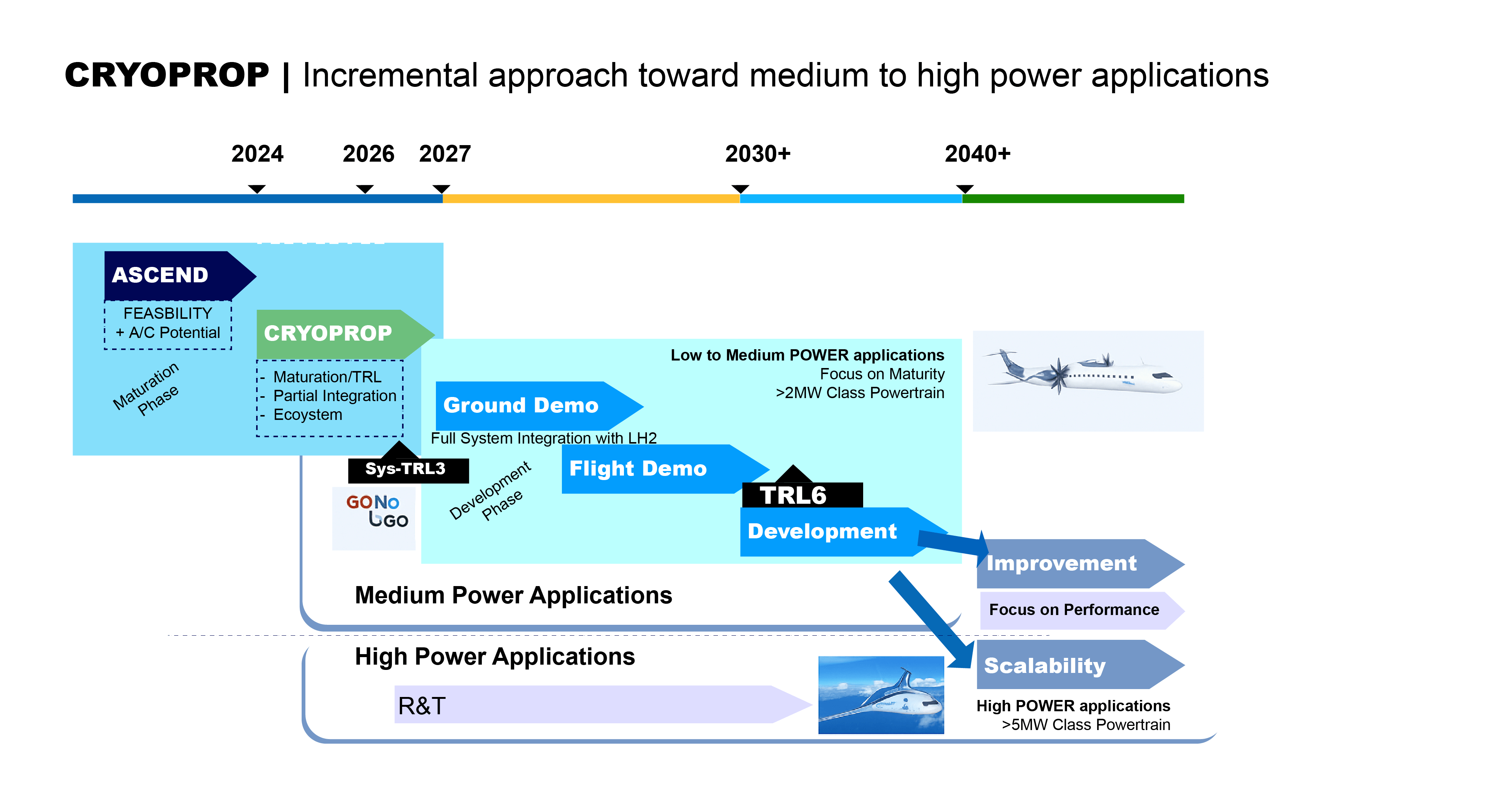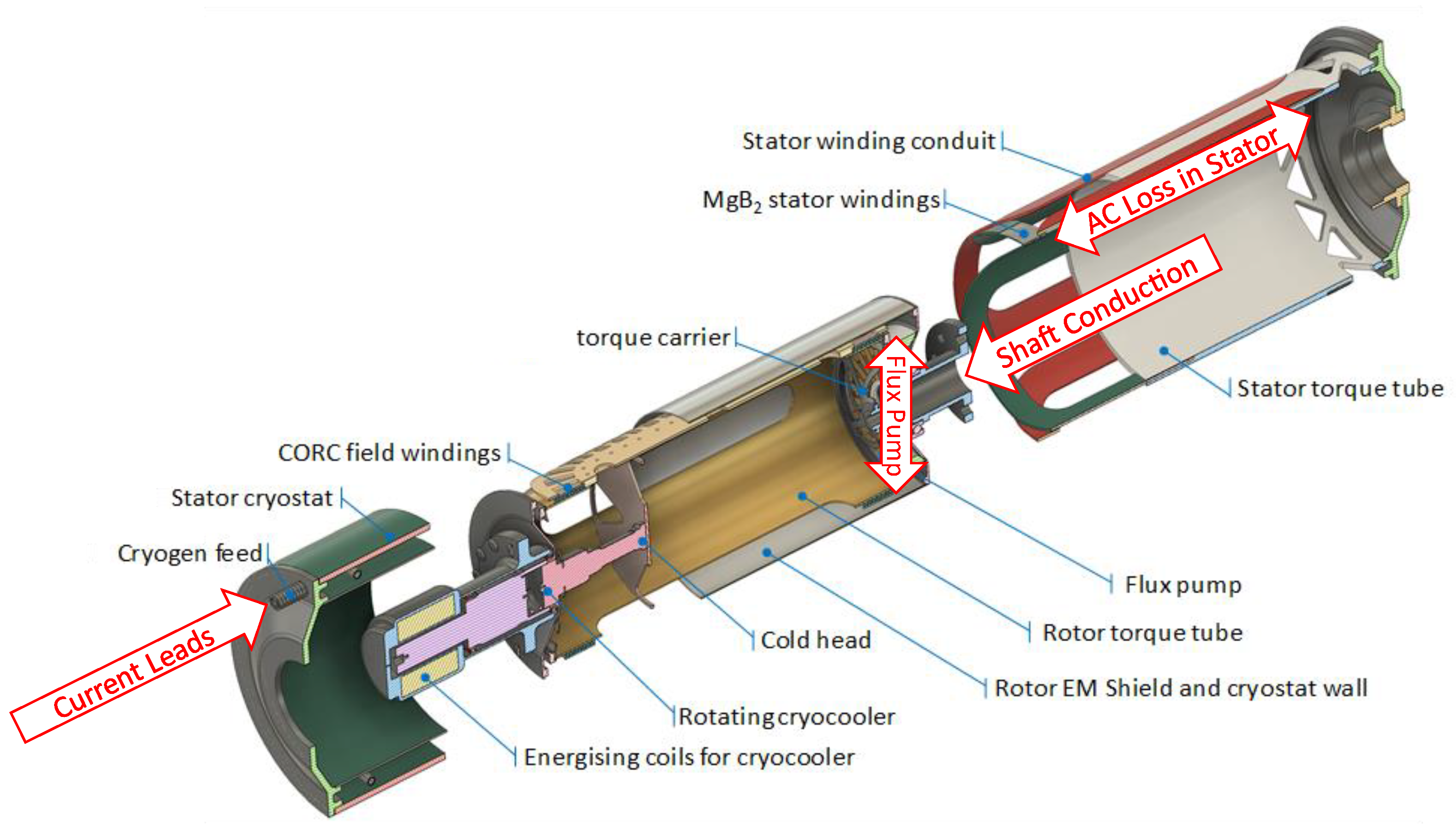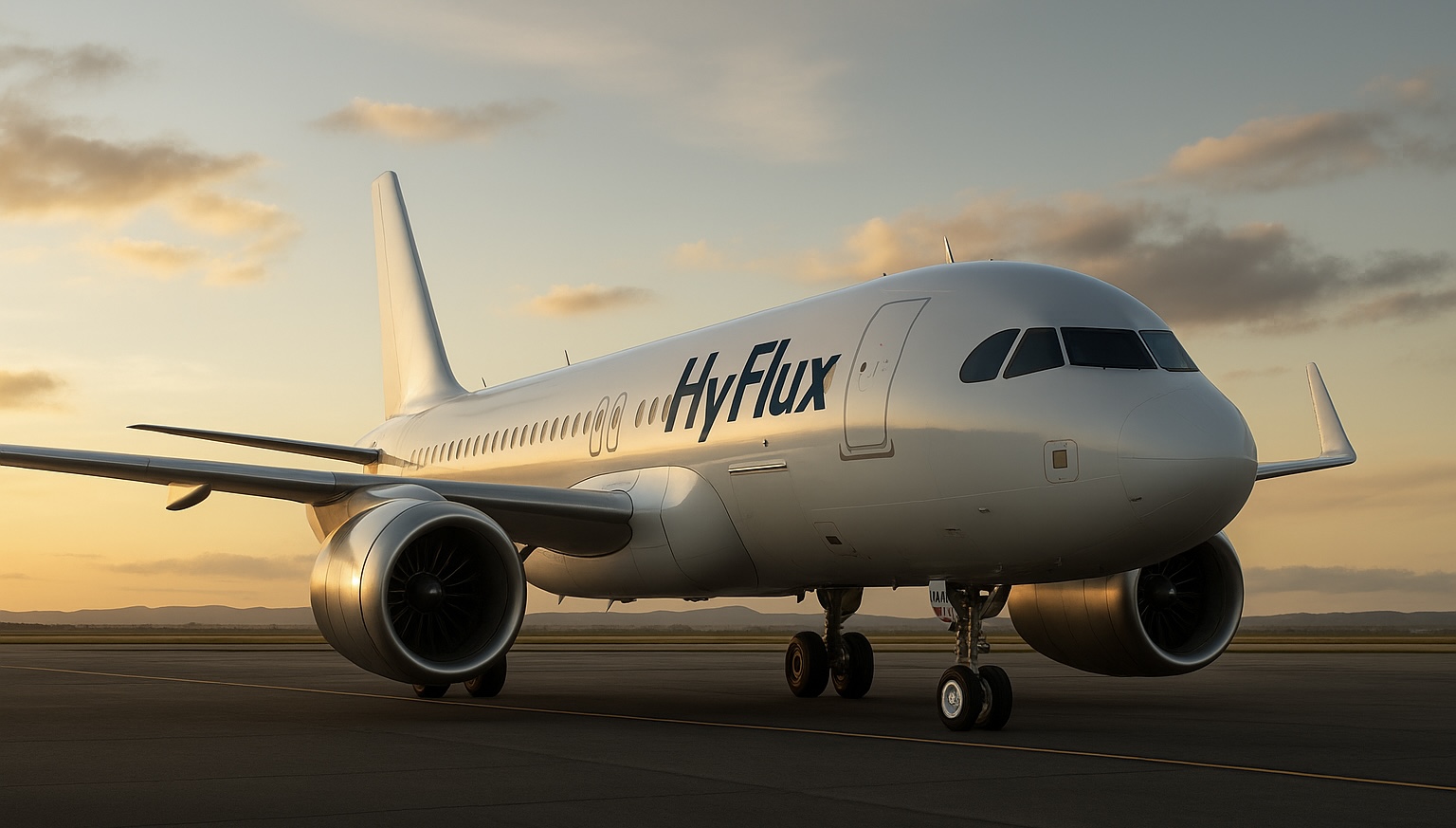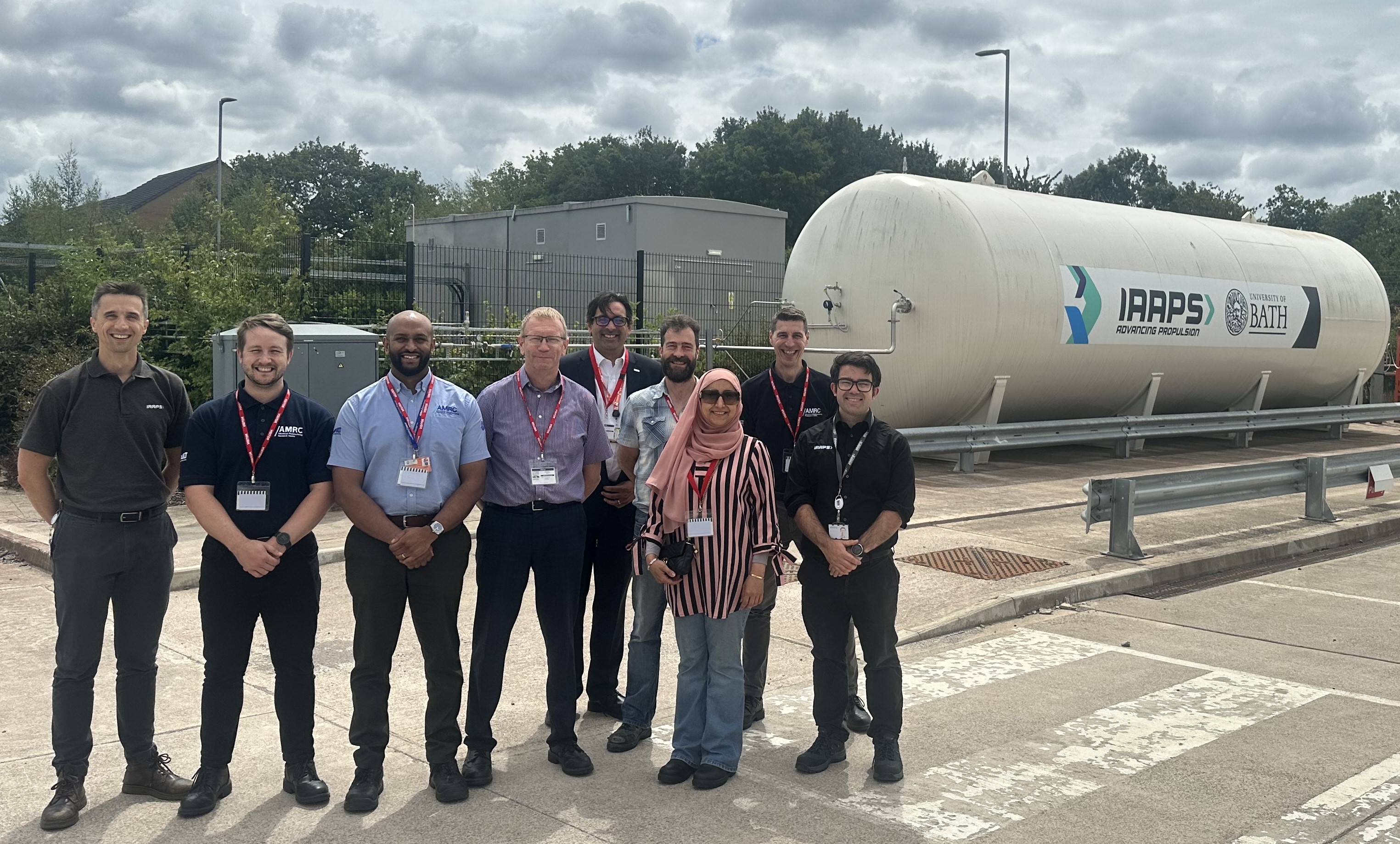In this article:
• Discover how cryogenic systems are enabling superconducting propulsion in aviation.
• Learn about TRL progress from Airbus projects ASCEND and CRYOPROP.
• Explore the path from lab-scale demonstrations to industrialization by 2040.
Introduction
The aviation industry is on a bold journey toward zero emissions, and hydrogen is at the center of that transition. But to make hydrogen flight viable, new cryogenic technologies are essential — not only to store and distribute liquid hydrogen (LH₂), but also to enable superconducting propulsion systems that drastically increase efficiency. Airbus’s ASCEND and CRYOPROP projects, alongside ecosystem partners like HyFlux, are defining the roadmaps that move these technologies from concept to industrialistion.
Cryogenic Technology Milestones
Airbus outlines a clear progression:
• ASCEND (2020–2023): Discover and validate TRL 1–2, exploring feasibility of superconducting technologies for aircraft propulsion.
• CRYOPROP (2024–2026): Advance to TRL 3, achieving system maturation, partial integration, and early ecosystem engagement.
• 2027–2029: Adapt cryogenic and superconducting systems for integrated powertrains, targeting TRL 4–5.
• 2030+: Validate at TRL 6 with full integrated propulsion systems, progressing toward commercial readiness.
• 2035+: Refine TRL 7+ for industrialization, scaling to meet global zero-emissions aviation goals.
Key demonstrators include electrical power units, cryogenic heat exchangers, cryo-fans, cryo-lines, and cryo-valves — technologies critical to reliable superconducting propulsion.
Addressing Electrical Hazards and Reliability
Cryogenic propulsion must operate safely under extreme conditions. Airbus studies highlight the risks of partial discharge and quench events, which can cause insulation degradation and electrical arcs. Experiments with CORC superconducting cables immersed in gaseous helium show promising resilience, tolerating up to 1500 Vrms at cryogenic temperatures.
Aircraft integration also adds unique challenges:
• Vibration exposure (1–10 G rms across a wide frequency range).
• Mechanical shocks up to 6G.
• Over 10,000 thermal cycles during aircraft service life.
Projects like ICEFlight (University of Twente & Delft) are exploring reliability of superconducting cables and structural materials under these demanding conditions.
Technologies for Future Cryogenic Propulsion
Looking ahead, research is focusing on:
• Superconducting Motors: Fully superconducting stators and rotors, optimized for AC operation and manufacturability.
• Power Electronics: Cryogenic inverters, DC/DC converters, and cryo circuit breakers for efficient energy distribution.
• System Resilience: AI-driven fault detection, fiber Bragg grating temperature sensing, and compact fault current limiters.
These innovations reduce AC losses, improve fault tolerance, and ensure safe operation under high current densities — all essential for scaling to aviation megawatt levels.
Path to Industrialisation
The roadmap points toward ground and flight demonstrations by 2030, with TRL 6 achieved for integrated propulsion systems. Medium-power applications (>2 MW) will mature first, followed by high-power (>5 MW) propulsion for narrowbody and widebody aircraft. From 2035 onward, cryogenic propulsion technologies will transition into industrialized systems ready to decarbonize commercial aviation.
Conclusion
Cryogenic technology is no longer a distant ambition; it is moving rapidly through technology readiness levels toward commercial adoption. HyFlux Aero, aligned with Airbus’s ASCEND and CRYOPROP pathways, is advancing superconducting motors and cryogenic heat exchangers that will form the backbone of hydrogen-electric propulsion. Together, these innovations pave the way to scalable, zero-emissions flight.




